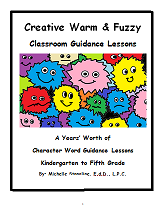Sandtray Activity for Preschool through First Grade Children (2-7 years-old, Piaget's Pre-Operational Stage)
by Martha Nodar, Sand Tray Therapist
(Atlanta, Georgia)
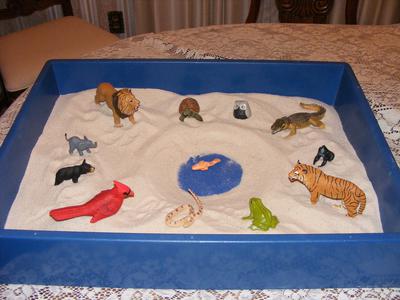
Sandtray Activity for Preschool through First Grade Children (2-7 years-old, Piaget's Pre-Operational Stage)
Sandtray Therapy Activity for Preschool through First Grade Children (2-7 years-old, Piaget’s Pre-Operational Stage)
By Martha Nodar: Sand Tray Therapist Expert
“The Animal in Us” Sand Tray Therapy Activity
Humans are the most intelligent and sophisticated primates within the Animal Kingdom. However, although we are at the top of the chain, we are still animals. In fact, Aristotle classified humans as social and political animals. As animals, humans are conditioned for survival.
We owe our sophistication to the complexity of the human brain with the prefrontal cortex (the seat of reason), the executor, which we use for making decisions and solving problems. We owe our instinctual reactions to the limbic system with the amygdala (the seat of emotion) and the hippocampus—the part of the brain that remembers the emotion attached to a particular experience.
At any given moment, the amygdala will receive a message a little earlier than the prefrontal cortex. And that is tied in to our innate condition for survival, which is a similarity we share with other animals. We have seen how a squirrel, although indecisive at times, tries to run away to avoid being hit by a car. Similarly to a squirrel, a quick reaction by us is bound to be more effective in escaping the probability of perceived danger than taking the time to examine whether or not we may be in actual danger.
The Animal in Us is a fun activity designed to remind us of our primitive reactions as a clue to be studied rather than denied. Embracing our own humanness is necessary before we can accept someone else’s humanness.
•Build a wooden tray, or buy one either made of wood or plastic (approximately 20 inches long by 15 inches wide). This would be smaller than the regulation sandtray.
• Either cover the bottom of the tray with blue paper or paint it in blue (may also paint the sides if desired) to represent water/environment.
• Fill the tray with clean sand
• Have a large selection of miniature animals (2-4 inches tall)
• Begin by asking the child to select an animal to represent him/herself in the sand
• Next, ask the child:
o What animal would you select to represent your Mom, Dad, siblings?
o Avoid asking “why.” Instead, ask: “What made you select this animal to represent your (Dad, Mom, and siblings)?” Give the child an opportunity to say he/she didn’t know and accept the answer.
Animals can be used to represent our primitive emotions while offering a fun and safe way to encourage children in expressing themselves. The goal in doing this activity is for children in this age group to express the feelings and thoughts they may have, but may be too young to have the cognitive ability to express.
For example, children in this age group (2-7 years old) may not feel safe expressing having witnessed their parents’ anger. But, it is likely they will feel it is fun to compare their parents with miniature animals, especially after they have also compared themselves to an animal.
It is not likely a child in this age group will say “My parents were screaming at each other last night and it scared me.” Instead, they may be more willing to illustrate it in the sand by representing their parents with aggressive animals, such as lions, tigers, bears, or alligators.
The idea of beginning the activity for the sand tray therapy is by asking the child to pick an animal to represent him/herself is based on several reasons: to ease the child into the activity, and to help the child get comfortable with using animals to represent people in the family.
Because of children’s cognitive development before age 7, it is not likely we would be able to fully extract and interpret the meaning in the tray for this age group (2-7years old). But, the activity offers a glimpse into how the child may perceive him/herself within the family system.
For instance, does the child perceive him/herself as a bird (in a cage) and his parents as cats or tigers? Does the child bury his representational animal in the sand?
Stay with the metaphor to make it safe for the child to begin expressing him/herself. There is no need to “fix” anything; just listen and pay attention to the body language.
Let's meet in the sand...:)
Note from Dr. Stangline: Martha Nodar was one of my sand tray therapy students at Mercer University in Atlanta. She was one of my most gifted students as a sand tray therapist. It is so wonderful to see how Martha has expanded her creative counseling skills in the sand tray for sand tray therapy. She has now become the "expert" in my opinion.
As a teacher, this is one of the highest compliments... when the student becomes a master! Keep watching for Martha's ideas. She is going places!
Disclaimer: This website and its content is intended for trained licensed mental health professionals and school certified mental health professionals to use for their clients / students at their own discretion.
*If you ignore the disclaimer above are using these techniques on yourself and you feel any discomfort or upset it is highly suggested that you seek out a licensed mental health professional immediately.
"Beyond Art Therapy" is the concept from Dr. Stangline that combines all creative fields in therapy. It is not the traditional "art therapy" but goes beyond to include sand tray therapy, play therapy, mindfulness, meditation, color therapy, cognitive behavioral therapy, and a vast majority of other therapies.
For any other type of mental health emergency call your local 911 / Police Number immediately.
Dr. Stangline does not offer advice / suggestions to anyone who is not a professional mental health provider, or a student who is studying this field and has questions about mental health programs of study.
See our Exciting Selection of eBooks:
Award Winning:
Creative Counseling 101 eBook
Our Best Seller!
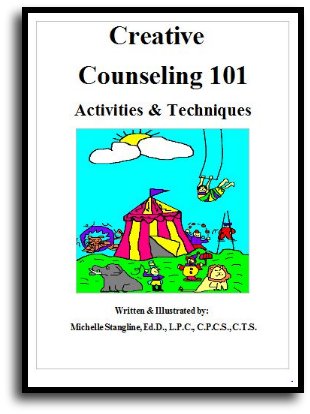
Step By Step Therapy:
Learn how to be a more Creative Therapist with the Book that started it all!
- Graduate School Counseling book used by hundreds of graduate counseling students!
- Includes full color reproducible worksheets with most activities.
- Winner of the Counselor Writer of the Year Award, 2011, Georgia Regional Award
Download Your Copy Today Only $39.95:
See Creative Counseling 101 eBook Information Here:
Get the Set
of all four
eBooks for only $98.95:
An incredible collection of how to do therapy eBooks!
A $159.80 Value,
You Save Over $60!
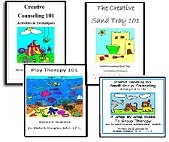
Get your complete set of the Creative Counseling 101.com eBooks by Dr. Michelle Stangline for only $98.95, that's less than $25.00 per eBook (Regular Price is $39.95 for each eBook.).
Your complete set includes:
- Creative Counseling 101
- Creative Group Counseling 101
- Creative Play Therapy 101
- Creative Sand Tray 101
For more information click the link below:
See Complete Set of eBooks For Sale Here:
New!!! "Beyond Art Therapy" 101 eBook
Over 300 pages of Beyond Art Therapy activities and techniques. Learn what I teach graduate counseling students!
See the link below for more information.
Only $39.95
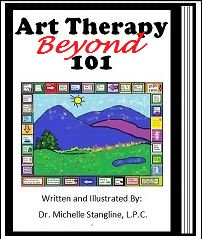
See More Invividual eBooks For Sale:
Sand Tray Therapy 101 eBook:
Learn how to do Sand Tray Therapy or enhance your skills.
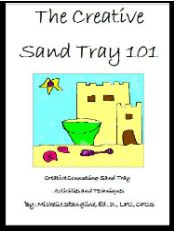
Play Therapy 101 eBook
Learn how to do play therapy or enhance your skills.
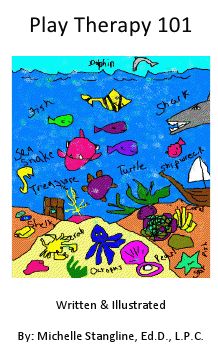
Small Group Counseling eBook For Sale:
Learn how to do creative group therapy and enhance your skills.
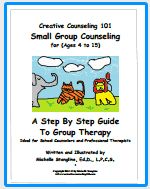
School Counselor Guidance Lesson & Social Stories eBook for sale:
Get a year's worth of school counselor guidance lessons with "Creative Warm & Fuzzy Classroom Guidance Lessons eBook". Introduce your students to the "Warm & Fuzzy Way". Click the link below for more information:
Warm & Fuzzy School Counselor Guidance Lessons eBook
